The impact that 5G is having on Industrial IoT (IIoT) is a hotly discussed topic. Wireless communication is essential for the Smart Factory and Industry 4.0 because it enables seamless, pervasive, and scalable connectivity among machines, people, and sensors as well as with mobile entities such as mobile robots, automated guided vehicles (AGVs), drones, and humans. It also delivers benefits by removing cables from stationary, rotating, and other objects with limited mobility.
One major contribution of 5G is extremely reliable communication, paving the way for wireless isochronous real-time motion control, sensor systems for monitoring critical processes, and AR/VR applications. And all of these are served by a single wireless communication system. This isn’t the only feature that makes 5G suitable for IIoT applications, however. Thanks to use cases published by 5G-ACIA, 5G technology has significantly evolved over the course of successive releases to provide ever-broader support for applications of these kinds. Besides radio capabilities, this white paper describes 5G capabilities that are relevant to IIoT applications, including support for Ethernet integration, time-sensitive networking (TSN), and security in nonpublic networks. It also talks about ways in which verticals can access 5G technology to drive the evolution of IIoT in terms of deployment and spectrum access.
The ultimate aim of this white paper is to facilitate a deeper understanding of capabilities and features of 5G that are important for industrial automation. Because 5G devices can be built with varying capabilities, it discusses which are needed for different functionalities. The same statement applies to features that are essential for integrating infrastructure.
Using 5G for connected industries is new territory for both information and communications technology (ICT) and operational technology (OT) players. Although 5G has been deployed in many countries since 2019 for enhanced mobile broadband services, its use in commercial and industrial scenarios in nonpublic networks is only just starting to get off the ground. 5G has already matured enough to support industrial IoT (IIoT) use cases, but on the business level a number of basic issues still need to be clarified. They include, for instance, how to specify and negotiate contractual service requirements and how to make sure that these requirements are met during a 5G system’s operational phase. A number of basic business-related questions are still open. All of these things require further study in order to present them more clearly and pave the way for practical implementation in industry.
This white paper aims to establish a common basis to facilitate communication on SLS among ICT and OT partners, especially in connection with industrial uses for 5G systems. Therefore, this white paper addresses both ICT and OT stakeholders.
Technical criteria that are important for evaluating wireless systems for Industrial IoT (IIoT) use cases are: scalable deployment options, ability to utilize different spectrum licensing models, support for strict IIoT performance requirements with mobility and manageable coverage area, ability to expose capabilities to applications using them, support for QoS and Ethernet technologies in general and TSN in particular, positioning, security, and conformance specification and testing. The whitepaper provides 5G benchmark for each of them.
5G network deployment can be scaled based on needed services, number of users and area to be covered, and both licensed and unlicensed spectrum operation modes are available. Edge computing is available to optimize network and resource usage in each scenario, and network operation can be highly automated.
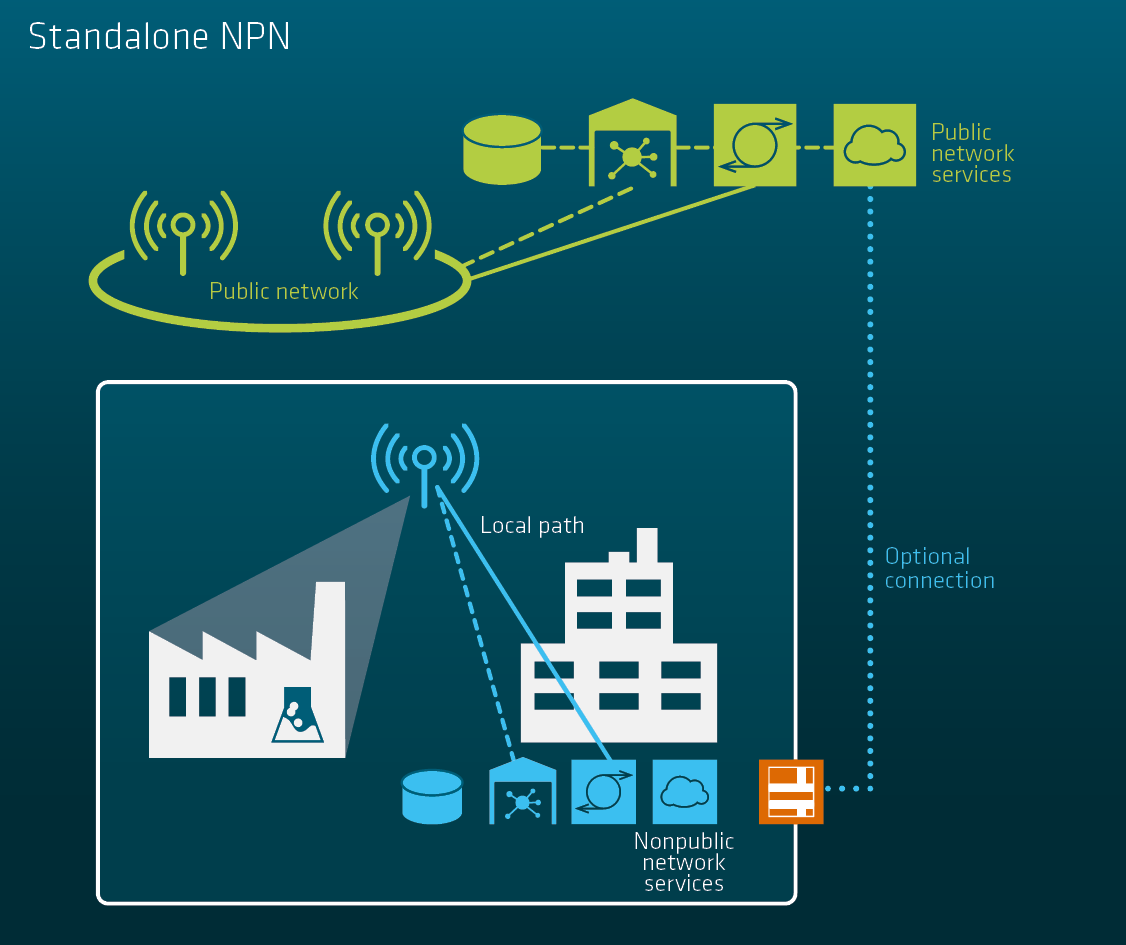
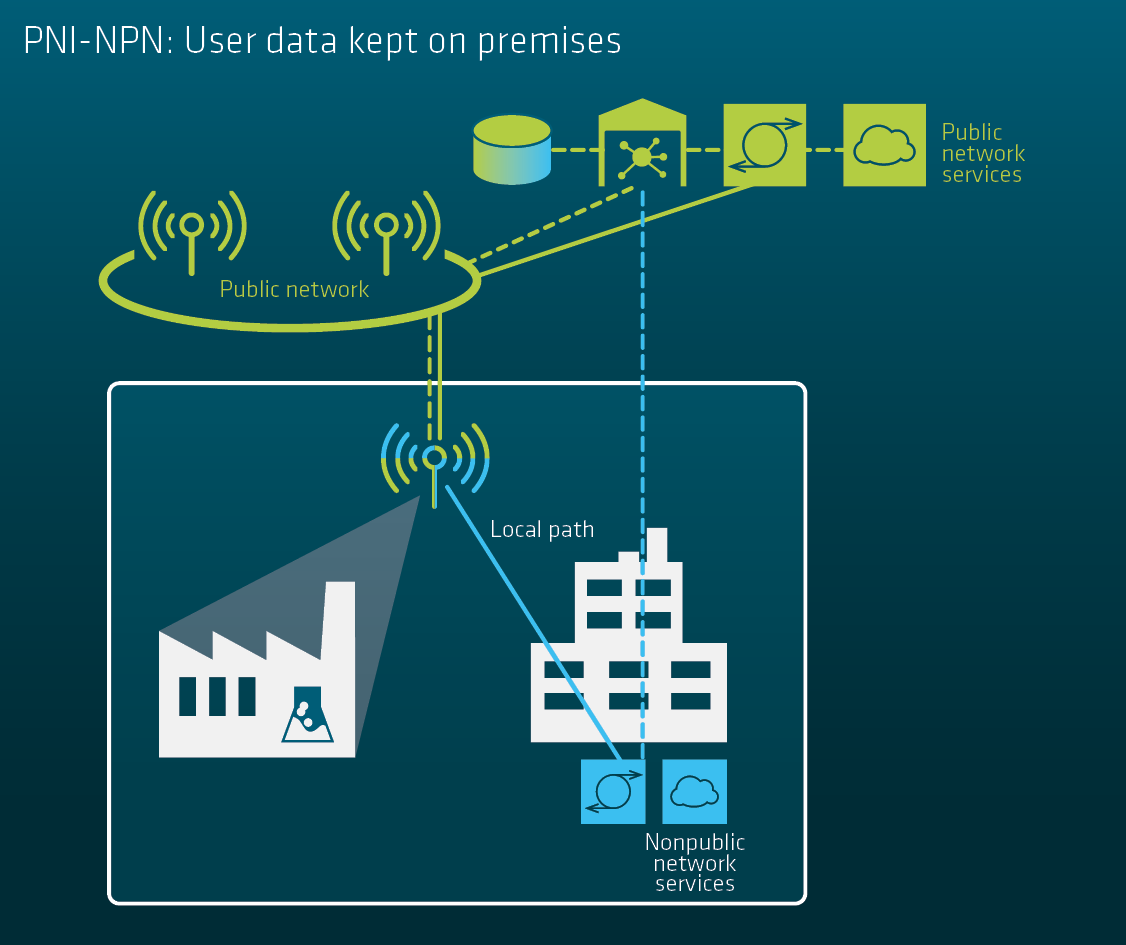
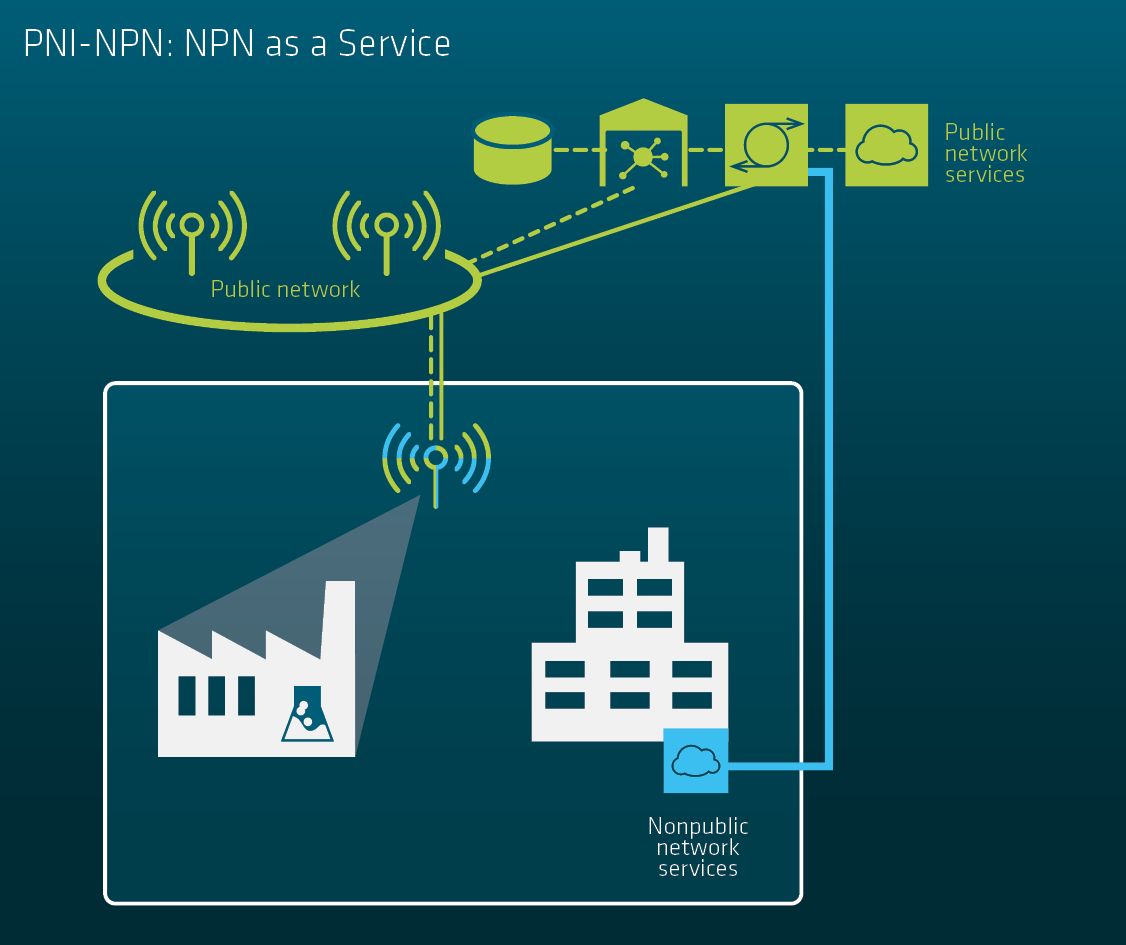
5G can support stringent latency needs of IIoT services. Radio latency less than 1 ms with a packet reliability greater than 99.9999% (down to 0.5 ms at 99.999% with optimizations) is supported with E2E latency of 1-2 ms and reliability of 99.999% (depending on core implementation). Time synchronization (e.g. to UTC) over the radio interface is supported to sub-ms accuracy. All this is possible in multiservice 5G network that can be optimized for needed type of service and capacity.
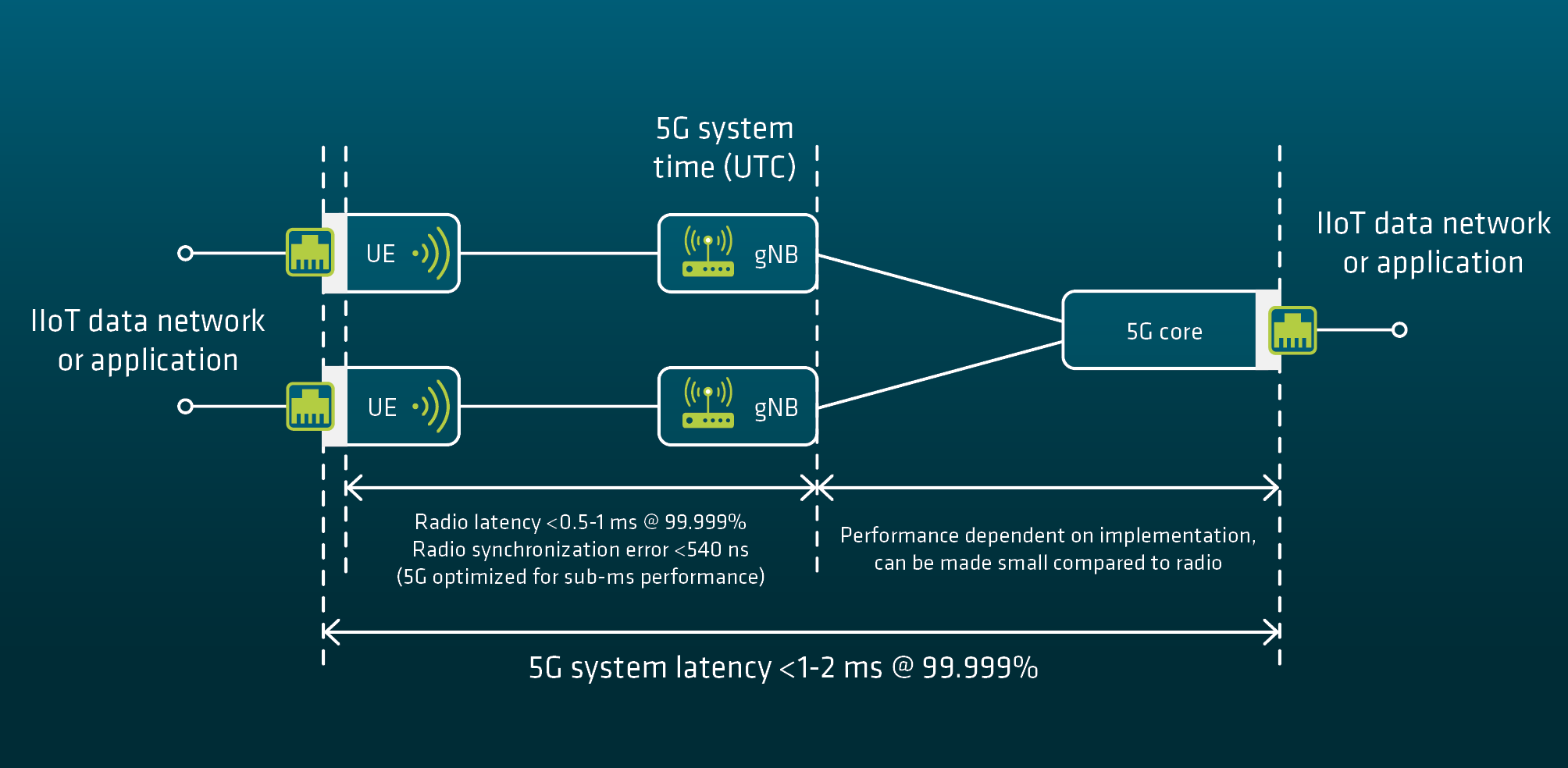
5G supports transport of standard IEEE 802.3 Ethernet traffic, and presents itself as a virtual bridge ready to integrate with existing network management systems. This provides basic capability for using 5G with Ethernet based systems. 5G QoS framework enables setting up QoS flows that are logically separate, and added with 5G’s URLLC capabilities it can support Time-critical traffic such as TSN, where 5G system is modeled as a TSN-capable Ethernet bridge.
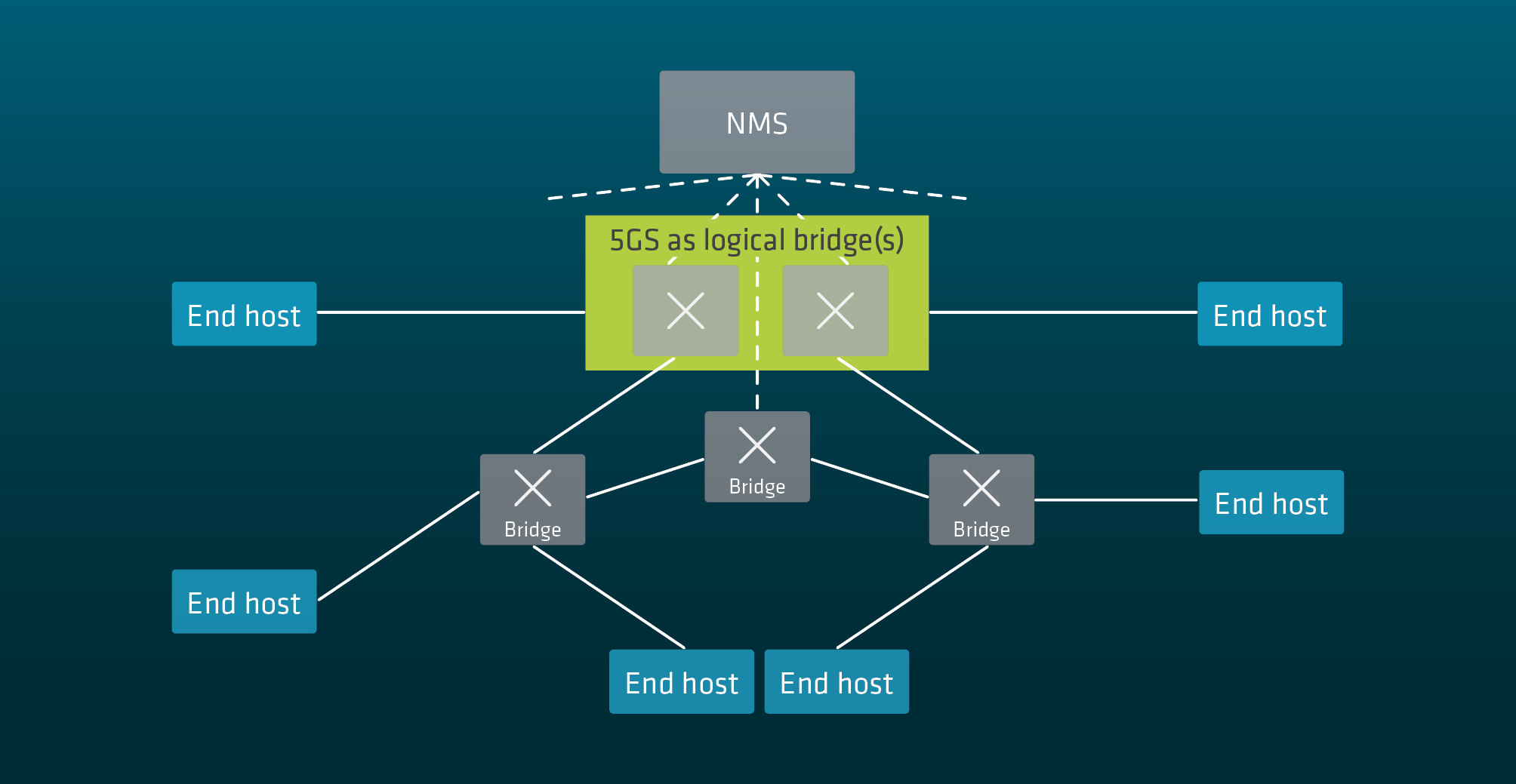
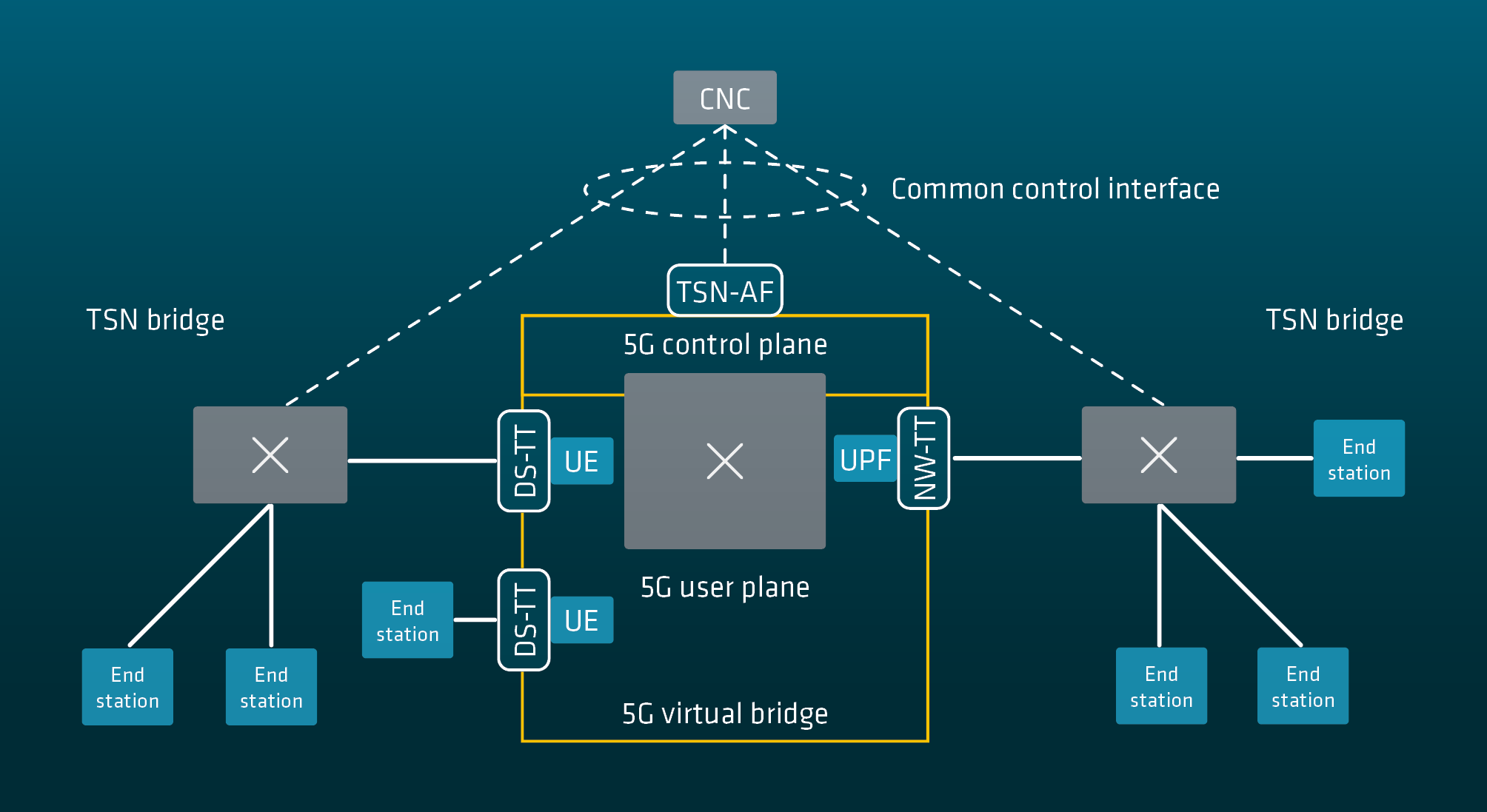
5G delivers a number of capabilities that enable advanced industrial use cases (including isochronous real-time motion control, sensor systems for monitoring critical processes, and AR/VR applications) for deployment over a single wireless communication system. They include both stringent communications requirements and integration capabilities to enable 5G to seamlessly blend in or coexist with preexisting and evolving Ethernet technologies.
5G-ACIA has a strong history of adapting 5G specifications to meet demanding use cases in the IIoT sector. In addition to presenting the IIoT capabilities of 5G based on extensive analyses carried out by 5G-ACIA, this white paper discusses various ways to add 5G communications to IIoT scenarios, including options for accessing and using frequency spectrum.

Do you want to learn more about this future-oriented topic? Please download or share the 5G-ACIA white paper as a PDF file.
You are currently viewing a placeholder content from YouTube. To access the actual content, click the button below. Please note that doing so will share data with third-party providers.
More InformationYou need to load content from reCAPTCHA to submit the form. Please note that doing so will share data with third-party providers.
More Information